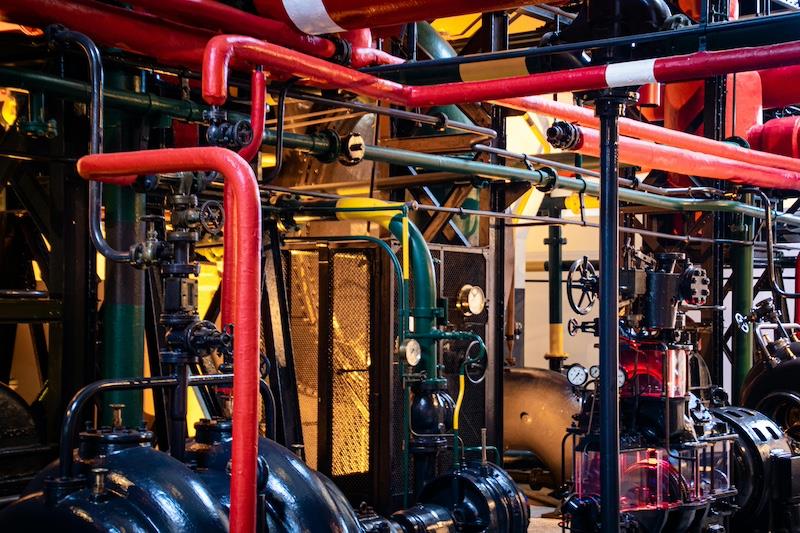
Common Pump Seal Failures And How To Prevent Them Robotics & Automation News
Pumps are vital components in various industrial and domestic applications, from water treatment plants to home aquariums. A key element of these pumps is the seal, which prevents leaks and maintains efficiency.
However, pump seals can fail for various reasons, leading to costly repairs or replacements. In this blog post, we'll explore common pump seal failures and how you can prevent them.
How to Prevent Pump Seal FailuresProper Installation : Ensure that seals are installed correctly by trained professionals. Misalignment or improper installation can lead to premature failure.
Regular Maintenance : Routine checks and maintenance can help identify potential issues before they escalate. Regularly inspect seals for signs of wear and tear.
Fluid Quality : Always use clean fluid free of contaminants. Installing filters can help keep the fluid clean and prolong the life of the seals.
Adequate Cooling : Make sure the pump has an adequate cooling system to prevent overheating. This is especially important in high-temperature applications.
Operational Best Practices : Avoid dry running the pump and monitor pressure levels to prevent surges. Ensuring that the pump operates within the recommended parameters can significantly extend the life of the seals.
Replacing Faulty Seals : Knowing when to replace a faulty seal can prevent the entire system from breaking down. For example, you can find a replacement Flowserve mechanical seal if the existing one shows signs of wear or failure.
Understanding Pump SealsPump seals, often referred to as mechanical seals, are designed to contain the fluid within the pump and maintain pressure by forming a barrier.
These seals are crucial in preventing leaks and ensuring the smooth operation of the pump. Most seal failures can be attributed to improper installation, incorrect operation, or lack of maintenance.
Common Types of Pump Seal FailuresThermal Deformation : Excessive heat can cause pump seals to deform, leading to leaks. This often occurs due to inadequate cooling or friction.
Contaminant Ingress : Foreign particles such as dirt or debris can infiltrate the seal, causing wear and tear. This issue is particularly prevalent in applications where the fluid being pumped is not entirely clean.
Chemical Attack : Some chemicals can erode the materials used in pump seals. This is especially common in industries that handle highly reactive substances.
Dry Running : Operating a pump without sufficient fluid can cause the seal to overheat and fail. This is one of the most common causes of seal failure.
Pressure Surges : Sudden changes in pressure can put undue stress on the seal, causing it to fail. This is often a result of system malfunctions or operational errors.
The Importance of Material SelectionThe material of the pump seal plays a crucial role in its longevity and effectiveness. Different materials offer varying degrees of resistance to heat, chemicals, and wear.
Common materials used in pump seals include carbon, ceramic, and various elastomers. Selecting the right material based on the specific requirements of the application can prevent many common types of seal failures.
Training and EducationInvesting in training for personnel who handle and maintain pumps can go a long way in preventing seal failures.
Understanding the intricacies of how seals work and what can cause them to fail helps in making informed decisions during installation, operation, and maintenance.
Signs of Impending Seal FailureVisible Leaks: One of the most obvious signs of seal failure is visible leakage around the pump area.
Unusual Noises: Changes in the sound of the pump, such as grinding or squealing, can indicate that the seal is failing.
Temperature Fluctuations: Unexplained changes in the temperature around the pump can signal that something is wrong with the seal.
Reduced Efficiency: A drop in pump performance or efficiency can be a sign that the seal is compromised.
The Role of Monitoring SystemsImplementing monitoring systems can be a game-changer in maintaining pump seals. These systems can continuously track parameters such as temperature, pressure, and vibration levels, providing real-time feedback.
Any deviations from the norm can trigger alerts, allowing for immediate action to prevent seal failure. Investing in such monitoring technology can lead to more proactive maintenance and reduce the likelihood of unexpected failures.
Collaborating with ExpertsAnother effective strategy is to collaborate with experts in pump maintenance and seal technology. Many manufacturers and service providers offer consultation services that can help you optimize your pump systems.
These experts can provide valuable insights into selecting the right seals, proper installation techniques, and maintenance best practices. Partnering with professionals can ensure that your pump seals are always in top condition.
New Technologies in Seal DesignWith advancements in technology, new materials and designs are being developed to enhance the durability and performance of pump seals. Manufacturers are now using composite materials that offer superior resistance to wear and tear.
Additionally, modern seal designs incorporate features that reduce friction and improve cooling efficiency. Staying updated with the latest innovations can provide a significant advantage in prolonging seal life.
ConclusionPump seal failures can lead to significant operational disruptions and costs. By understanding the common causes of seal failures and implementing preventative measures, you can extend the life of your pump seals and ensure the smooth operation of your pumps.
Regular maintenance, proper installation, and selecting the right materials are key factors in preventing seal failure.
Keep an eye out for signs of impending failure and act promptly to address any issues. By doing so, you'll save time, money, and a lot of headaches down the line.
Main image by Magda Ehlers, Pexels
Legal Disclaimer:
MENAFN provides the
information “as is” without warranty of any kind. We do not accept
any responsibility or liability for the accuracy, content, images,
videos, licenses, completeness, legality, or reliability of the information
contained in this article. If you have any complaints or copyright
issues related to this article, kindly contact the provider above.


















Comments
No comment